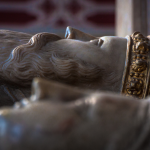Turku, located on the southwest coast of Finland, holds the distinction of being the country’s oldest city and a pivotal medieval center. Founded in the 13th century, Turku quickly grew into an important hub for trade, culture, and religion. For centuries, Turku was Finland’s primary urban center, shaping its early development and leaving an enduring legacy on Finnish culture. For those studying for the Finnish citizenship test, understanding the founding and historical significance of Turku offers insight into Finland’s medieval roots and early urbanization.
The Origins of Turku
The founding of Turku dates back to around the year 1229, when Bishop Thomas established a new bishopric in the area, laying the groundwork for the development of a permanent settlement. The location of Turku, at the mouth of the Aura River, was ideal for trade and transportation, allowing access to the Baltic Sea and creating connections with other parts of Scandinavia and northern Europe.
Turku’s name in Finnish, Turku, comes from the Old East Slavic word tǔrgŭ, meaning “marketplace”—a fitting name for a city that soon became a bustling center of commerce. Known in Swedish as Åbo, Turku attracted merchants, craftsmen, and settlers from various parts of Europe, creating a diverse and vibrant community.
Turku as a Religious and Educational Center
Turku quickly became Finland’s ecclesiastical and educational center. The city was home to the first diocese in Finland, which made it a focal point for the spread of Christianity. Turku Cathedral, consecrated in 1300, became the spiritual heart of Finland and remains a significant historical landmark today. Built in Gothic style, the cathedral housed the remains of Bishop Hemming and several other notable figures, solidifying its status as a major pilgrimage site and symbol of Finland’s Christian heritage.
In 1640, Turku became the site of Finland’s first university, the Royal Academy of Turku, marking an important development in Finnish education. The academy was founded by Queen Christina of Sweden and attracted students from all over the region. The institution later moved to Helsinki and became the University of Helsinki, but its roots in Turku demonstrate the city’s early role in shaping Finnish intellectual life.
Turku as a Center of Trade and Commerce
As Finland’s first city, Turku served as the nation’s main commercial center throughout the medieval period and beyond. Located on the Aura River, Turku’s port facilitated trade with other Baltic cities and Scandinavian countries. Merchants from Germany, Sweden, and the Hanseatic League established connections with Turku, bringing goods, ideas, and cultural influences to the city.
Turku’s marketplace, or kauppatori, became a lively gathering point for trade, where local and foreign merchants exchanged goods like furs, timber, iron, and textiles. The wealth generated by trade helped Turku grow in size and importance, eventually making it Finland’s administrative center. During the medieval period, the Swedish crown recognized Turku’s significance and granted it town privileges, further solidifying its position as Finland’s leading city.
The Role of Turku Castle
Turku Castle, constructed in the late 13th century, is one of Finland’s oldest and most significant historical buildings. Located near the mouth of the Aura River, the castle served as a military fortress, administrative center, and royal residence. Over the centuries, Turku Castle expanded and played a key role in protecting the city and its trade routes.
The castle became a symbol of royal authority, where Swedish governors and nobility oversaw the region. It was also a focal point during conflicts between Sweden and Russia, as Finland was frequently a battleground in their wars. Today, Turku Castle is a major tourist attraction and museum, offering insight into Finland’s medieval history and architectural heritage.
The Decline of Turku’s Influence
Turku’s prominence began to decline in the early 19th century when Finland became part of the Russian Empire in 1809. The Russian authorities decided to move Finland’s capital from Turku to Helsinki, partly due to Helsinki’s strategic location closer to St. Petersburg. This relocation marked a turning point, as Helsinki began to grow into the political and administrative heart of Finland, diminishing Turku’s role.
A devastating fire in 1827 further contributed to Turku’s decline. Known as the Great Fire of Turku, it was the largest urban fire in Finland’s history, destroying much of the city and the original buildings of the Royal Academy of Turku. The university was subsequently relocated to Helsinki, marking another shift of educational prominence from Turku to the new capital.
Despite these setbacks, Turku rebuilt and retained its significance as a cultural and commercial center in southwestern Finland. The city’s resilience and ability to adapt to change are celebrated aspects of its history, and Turku continues to be an important regional center today.
Turku’s Legacy in Finnish Culture
Though no longer Finland’s capital, Turku has left an indelible mark on the country’s history and culture. The city’s medieval heritage, embodied in landmarks like Turku Cathedral and Turku Castle, remains a source of pride and attracts visitors from around the world. Turku is also known for its annual Medieval Market, which brings the city’s history to life with reenactments, crafts, and performances, allowing Finns to celebrate their heritage.
As a cultural center, Turku hosts numerous festivals, theaters, and museums, maintaining its status as a vibrant, artistic city. In 2011, Turku was designated as the European Capital of Culture, underscoring its continued importance to Finnish cultural life.
Turku’s Role in Modern Finland
Today, Turku is a lively university city and a hub for technology, research, and industry. The University of Turku and Åbo Akademi (the Swedish-speaking university) contribute to the city’s academic life, continuing the educational legacy established centuries ago. Turku’s port remains one of Finland’s busiest, facilitating trade and tourism with other Baltic countries and strengthening the local economy.
The city is also an advocate for environmental sustainability and innovation, participating in green initiatives and sustainable urban planning projects. Turku’s adaptability and historical resilience reflect Finland’s broader values of resourcefulness, environmental stewardship, and cultural preservation.
Turku as a Symbol of Finnish Heritage
For those studying for the Finnish citizenship test, understanding Turku’s founding and history provides insight into the roots of Finnish urbanization, trade, and cultural development. As Finland’s first city and medieval center, Turku symbolizes the country’s journey from a frontier settlement to a developed society. The city’s resilience and contributions to Finnish culture underscore the values of adaptability and tradition that are central to Finnish identity.


